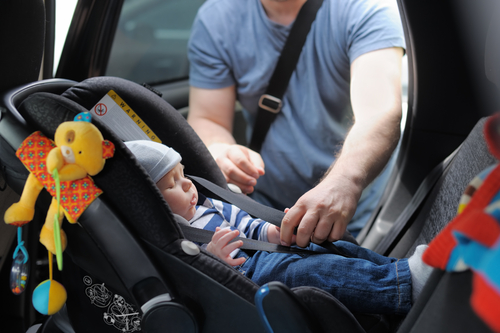New Jersey’s car seat law gets an update
Posted August 4th, 2015 by Anthony Carbone, PC.
Categories: Legal Topics.
 A few months ago, we provided you with some information regarding child safety restraints. As New Jersey’s updated car seat law is about to go into effect, it is crucial to know the details. Child restraints are designed to protect young passengers. Failure to use them can result in serious injuries. Tickets may also be issued against drivers who fail to observe the law concerning the use of car seats.
A few months ago, we provided you with some information regarding child safety restraints. As New Jersey’s updated car seat law is about to go into effect, it is crucial to know the details. Child restraints are designed to protect young passengers. Failure to use them can result in serious injuries. Tickets may also be issued against drivers who fail to observe the law concerning the use of car seats.
The Need for Car Seat Laws
Many remember the days that children were not required to be strapped into any type of safety restraint system. Gone are the days that grandma held onto the new baby in her lap. Too often, accidental mishap found the infant acting as a cushion. Unrestrained infants have also catapulted outside the vehicle. There is a demonstrated need for car seat regulation. Some say our existing laws are too lenient and do not properly protect the safety of young passengers.
New Laws Take Effect September 1
The new law regarding child safety restraints takes effect on September 1. It is formally referred to as an act concerning child passenger restraint systems. With the exception of school buses, the new legislation is applicable to all vehicles containing seatbelts and transporting children under the age of eight, who weigh less than eighty pounds.
Here are some of the important components of the law:
- Children under age two and weighing less than 30 pounds: Car seat must face to the rear and also secure the child with a five-point harness.
- Children under age four and weighing less than 40 pounds: Car seat should face to the rear and also secure the child with a five-point harness. This condition changes once the child has outgrown the car seat manufacturer’s weight and height recommendations. At that time, the child seat may be changed to face forward.
- Children under age eight and less than 57 inches: Child must be secured in a forward-facing child safety restraint system with a five-point harness until the child reaches the maximum height and weight recommendations set by the car seat manufacturer. The child should then be moved to a booster seat in the rear of the car.
- Children and vehicle front seats: If the motor vehicle does not have rear seats, children may be secured in child restraint systems or booster seats in the front of the vehicle. There is a caveat to this, as it applies to children placed in rear-facing car seats. If the vehicle is equipped with passenger side airbags, they must be disabled or turned off.
There are increased fines for failing to properly restrain child passengers. At the Law Offices of Anthony Carbone, we consider your child’s safety to be of utmost importance. If your child has been involved in an automobile accident, we want to help you. Contact us for an appointment to discuss your case.


